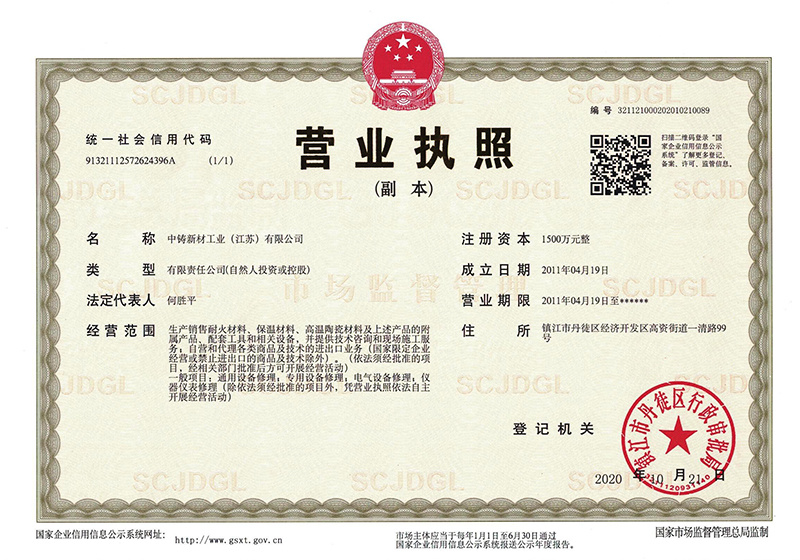News
SINO-FOUNDRY—professional refractory manufacturer
Breaking Down the Composition of High-Quality Ramming Mass Products for Superior Performance
2025-08-23
Breaking Down the Composition of High-Quality Ramming Mass Products Understanding Ramming Mass: The Basics Ramming mass is a critical component in various high-temperature applications, particularly in the metal and glass industries. This material is primarily utilized to line furnaces and kilns, providing insulation and protection against extreme heat. Unlike conventional materials, ramming mass
Breaking Down the Composition of High-Quality Ramming Mass Products
Understanding Ramming Mass: The Basics
Ramming mass is a critical component in various high-temperature applications, particularly in the metal and glass industries. This material is primarily utilized to line furnaces and kilns, providing insulation and protection against extreme heat. Unlike conventional materials, ramming mass offers unique properties that make it suitable for specific industrial needs.
The Importance of High-Quality Ramming Mass
Choosing high-quality ramming mass can significantly impact the efficiency and longevity of industrial equipment. **High-quality ramming mass** ensures excellent thermal stability, resistance to thermal shock, and durability under harsh conditions. In this article, we will explore the essential components of high-quality ramming mass products and their impact on overall performance.
Key Components of High-Quality Ramming Mass
The composition of ramming mass is vital for its performance. Let’s break down the key components that contribute to the effectiveness of high-quality ramming mass products.
1. Silica Sand: The Core Ingredient
Silica sand is the primary component of ramming mass, typically comprising 60-70% of the mixture. Its high melting point and excellent thermal insulation properties make it indispensable in high-temperature applications. Additionally, the purity of silica sand directly influences the quality of the ramming mass, as impurities can lead to premature failure in high-heat environments.
2. Alumina: Enhancing Refractoriness
Alumina is another key ingredient, contributing to the refractory nature of ramming mass. It enhances thermal stability, chemical resistance, and mechanical strength. The incorporation of alumina allows the ramming mass to withstand higher temperatures, making it suitable for applications that experience extreme heat fluctuations.
3. Binding Agents: Ensuring Cohesion
Binding agents, such as calcium aluminate cement or sodium silicate, play a crucial role in holding the components together. These materials help achieve the desired consistency and strength. The choice of binding agent affects the ramming mass's setting time and durability, influencing how well it performs in high-stress environments.
4. Additives: Tailoring Performance Characteristics
Various additives are often included to enhance the performance characteristics of ramming mass. These can include:
- Expansion Agents: Used to improve thermal shock resistance by allowing for controlled expansion and contraction.
- Fiber Additives: Such as ceramic fibers, which enhance tensile strength and overall durability.
- Coloring Agents: Sometimes added for identification or aesthetic purposes.
Properties of High-Quality Ramming Mass Products
Understanding the properties of high-quality ramming mass products helps in selecting the right material for specific applications. Here are the main properties that distinguish them:
1. Thermal Stability
High-quality ramming mass can withstand extreme temperatures, typically exceeding 1500°C. This thermal stability is crucial for industries like steel, glass, and ceramics, where high-heat environments are common.
2. Resistance to Thermal Shock
Thermal shock resistance is the ability of a material to withstand rapid temperature changes without cracking or degrading. High-quality ramming mass is designed to endure these fluctuations, ensuring longer life and reduced downtime in industrial processes.
3. Chemical Resistance
In addition to heat, ramming mass often comes into contact with various chemicals, including slag, fluxes, and other corrosive materials. High-quality ramming mass offers excellent chemical resistance, preventing degradation over time.
4. Mechanical Strength
Ramming mass must withstand mechanical stresses imposed during operation. High-quality products exhibit superior compressive and tensile strength, ensuring they maintain integrity under heavy loads.
Applications of High-Quality Ramming Mass Products
The versatility of high-quality ramming mass allows for a wide range of applications across various industries. Here are some prominent uses:
1. Steel Manufacturing
In the steel industry, ramming mass is used to line induction furnaces and ladles, providing essential insulation to maintain high temperatures during the melting and pouring processes.
2. Glass Production
Ramming mass is critical in glass manufacturing, where it protects furnaces against the corrosive nature of molten glass and ensures uniform heating for optimal product quality.
3. Ceramic Kilns
In ceramic applications, ramming mass is applied to kilns to provide insulation and protection during the firing process, promoting even heat distribution and product consistency.
4. Waste Incineration
High-quality ramming mass is also utilized in waste incineration facilities, where it withstands the extreme heat generated during the combustion of waste materials.
Choosing the Right Ramming Mass
Selecting the appropriate ramming mass for your application involves understanding the specific requirements and conditions. Here are some factors to consider:
1. Temperature Requirements
Evaluate the maximum and minimum temperature ranges your application will experience. Ensure that the chosen ramming mass can withstand these conditions without degradation.
2. Chemical Exposure
Consider the chemical environment in which the ramming mass will be used. Ensure that the material offers adequate resistance to any corrosive substances present.
3. Application Type
The nature of the application—whether it be steel, glass, or ceramics—also dictates the type of ramming mass required. Consult with suppliers to find the best fit for your specific needs.
4. Environmental Conditions
Assess the environmental conditions, such as humidity and operational pressure, that may affect the performance of ramming mass. Choose materials that can cope with these factors.
Frequently Asked Questions (FAQs)
1. What is ramming mass made of?
Ramming mass is primarily composed of silica sand, alumina, binding agents, and various additives to enhance its properties.
2. How does ramming mass compare to other refractory materials?
Ramming mass offers specific advantages, such as superior thermal shock resistance and mechanical strength, making it ideal for high-temperature applications compared to other refractory materials.
3. How long does ramming mass last in industrial applications?
The lifespan of ramming mass depends on its quality, the application conditions, and maintenance practices. High-quality ramming mass can last several years under optimal conditions.
4. Can ramming mass be reused?
In some cases, ramming mass can be reused, depending on its condition and the specific application. However, it may need to be reprocessed or mixed with new materials for optimal performance.
5. How do I know if I need high-quality ramming mass?
If your application involves extreme temperatures, chemical exposure, or heavy mechanical stress, investing in high-quality ramming mass is essential for ensuring long-term performance and efficiency.
Conclusion
Understanding the composition and properties of high-quality ramming mass products is essential for making informed decisions in industrial applications. By selecting the right materials and understanding their performance characteristics, industries can achieve greater efficiency and longevity in their operations. Always consider the specific needs of your application and consult with experts to ensure you choose the best ramming mass for your requirements.
Related News
2024-11-05
Zhongzhu New Materials Industry sincerely invites you to participate in the 24th International Forum and Exhibition on Recycled Metals.

WeChat public account

View mobile website
Address : No. 99, Yiqing Road, Gaozi Street, EconomicDevelopment Zone, Dantu District, Zhenjiang City
Fax : +86-511-85683066
E-mail : sales@sfr168.com
Website : https://www.sfr168.com
Copyright©2023 Sino-Foundry Refractory(Jiangsu) Co.,Ltd. Powered by:www.300.cn
Copyright©2023 Sino-Foundry Refractory(Jiangsu) Co.,Ltd.
IPV6 | SEO | Cloud Information



